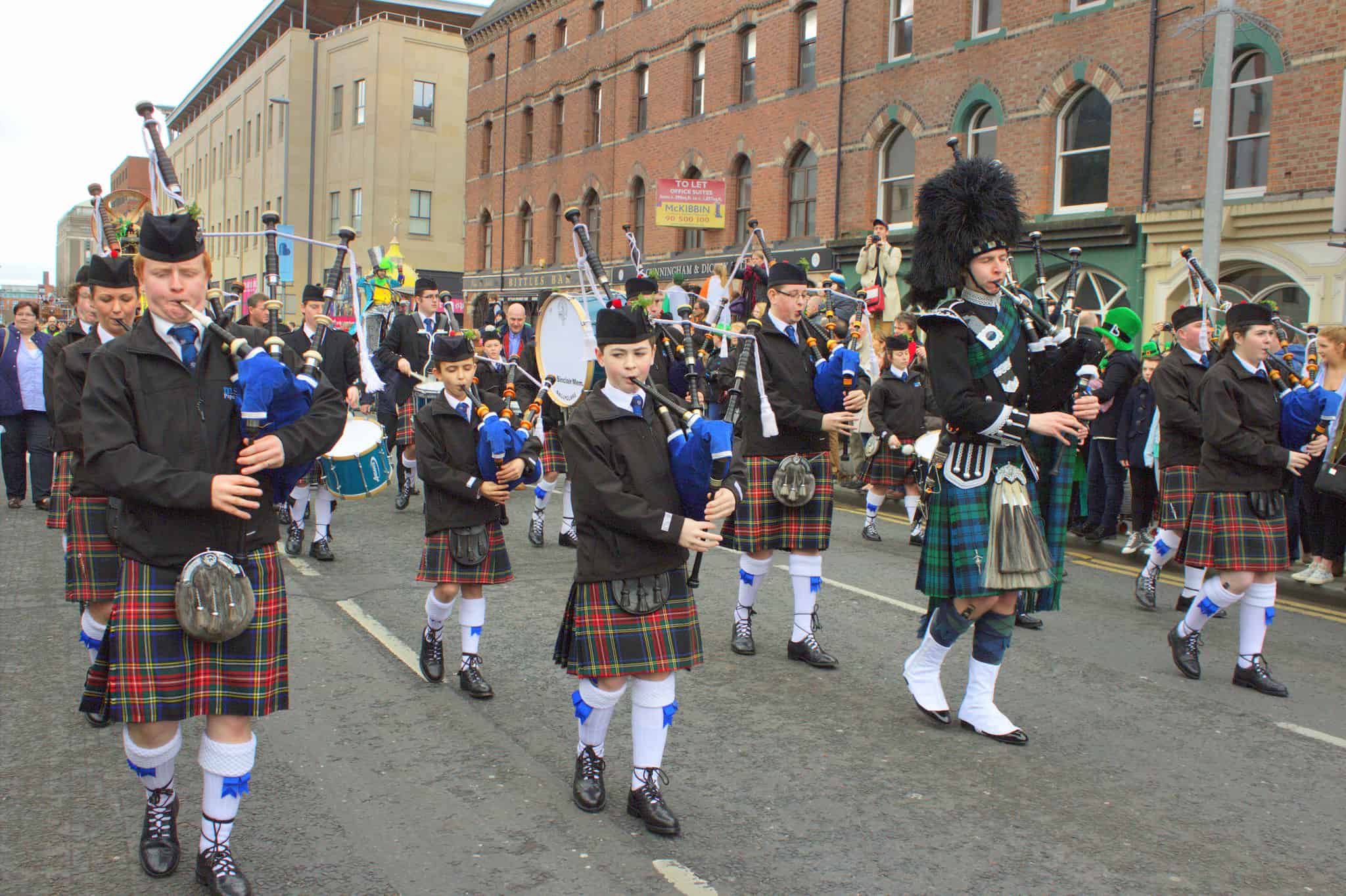The patron saint of Ireland, Patrick’s life is generally recognized as beginning around 385 and his death is celebrated as March 17, 461 (sometimes 493). He was born in Britain, kidnapped at the age of 16 and forced to work in Ireland. During this time he became religious and according to his own words, God helped him to escape and return to Britain. While back home, Patrick became a priest and ultimately returned to Ireland to convert the pagans to Christianity. Saint Patrick’s Day was made an official Irish public holiday in 1903, and in the 1990s the country decided to use the holiday to showcase the culture by holding festivals.
 https://www.flickr.com/photos/titanicbelfast/
https://www.flickr.com/photos/titanicbelfast/
During the early 17th century the Church named his feast day as March 17th and the day both honors his life and his efforts in bringing Christianity to Ireland. The Church honors many saints with name days, but St. Patrick’s has taken on a huge celebratory feel for a simple reason: It falls during lent. To properly celebrate a saint, the church lifted the Lenten restrictions on alcohol and feasting for that one day. Because of being surrounded by 39 days of abstinence and solemnity, St Patrick’s feast day has evolved into an international event where people throw off the restrictions imposed by the church and pack as much fun as they can into one day.
Belfast starts early by holding a spring festival that begins on March 10th and runs through the 17th. Féile an Earraigh features music, debates, storytelling and concerts along with recurring concomitant events like the Slemish Walk. Some events are in Gaelic and family activities in both languages are scheduled.
 https://www.flickr.com/photos/sebastiandooris/
https://www.flickr.com/photos/sebastiandooris/
The Linen Hall Library has a number of activities lined up that are meant to both educate visitors about St Patrick and celebrate the memorable events of his life. One particular exhibition follows Patrick’s journey on his second visit to Ireland and includes a lot of fun information about the legends and myths that surround him (hint: there were no snakes involved). As the oldest library in the city, the Linen Hall is also a great resource for those wanting to brush up on their Irish history while visiting Belfast.
The big excitement is of course the parade. Beginning at noon at City Hall it’s a gathering of professional and amateur performers, musicians, dancers and floats. Thousands gather to watch and continue over to the concert that takes place until about 3pm.
New this year is the St. Patrick’s Day SPAR Craic 10k that’s been organised as a
 https://www.flickr.com/photos/belfastcarnival/ fundraising event helping the Northern Ireland Hospice. The run begins early giving participants plenty of time to return for the parade and other festivities being held in the city.
https://www.flickr.com/photos/belfastcarnival/ fundraising event helping the Northern Ireland Hospice. The run begins early giving participants plenty of time to return for the parade and other festivities being held in the city.
Nearby Omagh and Armagh hold their own events on the 17th that include parades, music and craft fairs. After a day at Omagh, head to Armagh for Saint Patrick’s Big Night out and the concerts that get started around 8pm. Your tickets are good for all the performances and many people concert-hop until the wee hours of the morning, enjoying a variety of music styles and generally having a great time.
Finish your visit by taking a trip to Downpatrick a bit south of Belfast and visit Down Cathedral where St. Patrick is believed to be buried. The journey to his gravesite is a common event on his feast day (March 17th) and the visitor centre there tells the whole story of his life and accomplishments.


